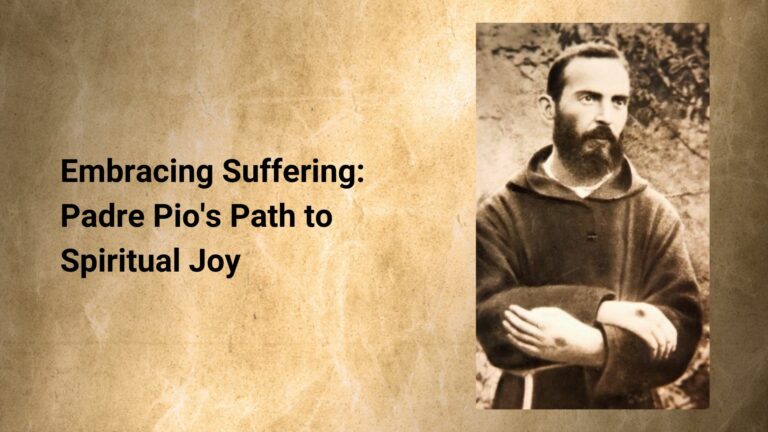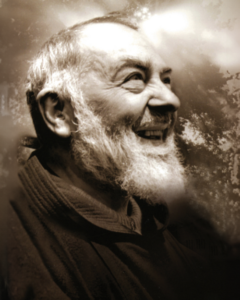
Pain and suffering are universal human experiences, no matter our age or background. But is there a way to transform suffering into happiness? According to Padre Pio, the answer is a resounding yes. His life offers us a powerful example of how to embrace suffering and find joy through it, drawing us closer to Jesus.
Padre Pio's Endurance Through Suffering
In 1910, Padre Pio, a Capuchin friar and mystic, wrote to his spiritual director, Father Benedetto, about the immense physical pain he was enduring. At the time, he had recently become a priest and was experiencing mysterious pains in his hands and feet, known as the invisible stigmata. Despite the agony, Padre Pio did not express distress in his letter. Instead, he shared how these moments of suffering brought him closer to Jesus.
Padre Pio wrote, “My dear Father, with God’s will, I still feel sick, but what affects me the most are these strong jabbing pains in my chest. At times, they cause me so much sorrow and suffering that it seems like my chest and back are breaking.”
While this description is undeniably excruciating, Padre Pio found joy within the pain. He continued, “But Jesus does not cease to gradually alleviate my sufferings and to speak to my heart… It is happiness. I do not know how to compare it. It is happiness that the Lord only lets me taste in tribulation.”
This profound statement reveals the mysterious joy Padre Pio found in his suffering, a joy rooted in his connection to Christ.
The Union with Christ in Suffering
Padre Pio’s sufferings became an avenue for a deeper union with Jesus. He explained that, during these moments, he felt the world oppressing and hating him, yet he desired nothing more than to love and suffer for Christ. “Yes, my Father, amid many sufferings, I am happy because I seem to hear my heart beating with Jesus.”
This powerful union between his own suffering and that of Christ echoes the teachings of Jesus, who told His disciples, “If the world hates you, keep in mind that it hated me first” (John 15:18). Padre Pio understood that suffering, when united with Christ’s suffering, is not only bearable but also a source of deep spiritual happiness.
Finding Happiness in Tribulation
Despite enduring significant physical pain and spiritual temptations, Padre Pio’s faith never wavered. He trusted that his sufferings were not signs of abandonment by Jesus but rather “games of love” meant to strengthen his spiritual resolve.
He wrote, “Jesus often hides, but that does not matter. I will try, with His help, to always remain with Him as He assures me they are not matters of abandonment, but in fact games of love.”
This insight is a reminder that, even in our darkest moments, God is with us. These trials are opportunities to demonstrate our loyalty and love for Him, knowing that He will not leave us alone in our suffering.
Transforming Suffering into Spiritual Growth
Padre Pio’s life and teachings offer a powerful lesson: suffering, when united with Christ, becomes a transformative force. It is a means of drawing closer to God and participating in His divine plan. By offering our pain to Jesus and embracing the cross, we allow our suffering to become a prayer for the salvation of souls and a pathway to holiness.
As we reflect on Padre Pio’s profound words, we are reminded that suffering is not something to be feared or avoided. Instead, it is an opportunity to unite ourselves with Jesus, who promised peace and comfort to His followers. As Saint Teresa of Avila wisely said, “Let nothing disturb you, let nothing frighten you, all things are passing away: God never changes. Patience obtains all things. Whoever has God lacks nothing; God alone suffices.”
Conclusion
Padre Pio’s example teaches us that suffering, when embraced with faith, can bring about spiritual happiness and joy. By uniting our pain with Christ’s, we not only find solace in our suffering but also draw closer to God’s love and grace. Let us take inspiration from this saint and follow his path of offering up our trials for the greater glory of God.
In times of tribulation, may we, like Padre Pio, find peace in knowing that we are never alone. Our suffering is a sacred opportunity to deepen our relationship with Christ and experience the true joy that only He can provide.

